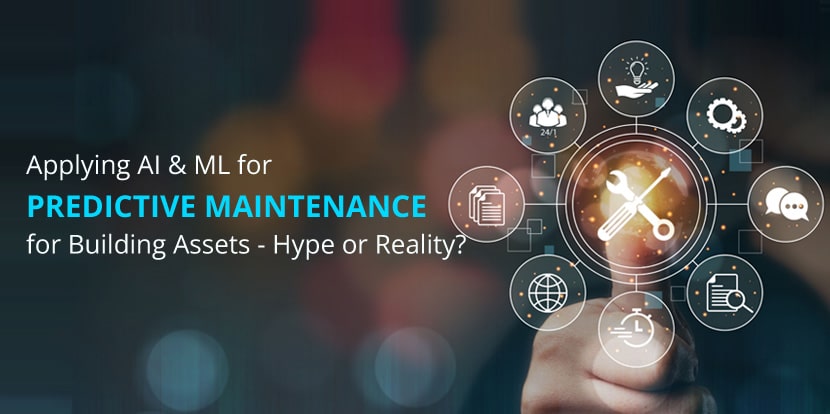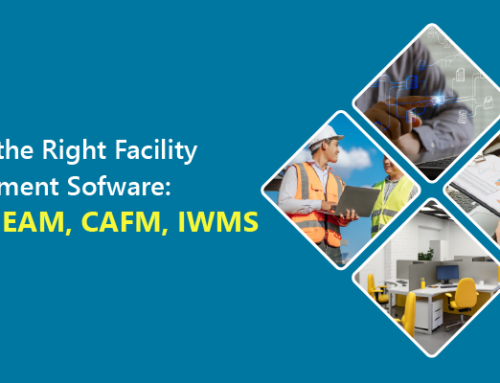Predictive maintenance enables building managers to take a more proactive approach to manage the operational health of a building’s assets. It helps predict issues and prevent unexpected breakdowns to ensure there is no disruption in the functioning of critical equipment.
Whenever there is a critical equipment failure in any facility, like the failure of a power transmission system, security systems failure or HVAC malfunction, etc., it can cause severe damage. The downtime can be expensive, a security threat, and may lead to loss of lives. Here is where Artificial Intelligence (AI) and Machine Learning (ML) technologies can come into play. AI/ML can predict failures in advance, giving the maintenance teams time to address the same, thus helping avoid such damages.
However, there is a misconception about the effective use of AI/ML for predictive maintenance in buildings, so it is time to delve deeper to improve the understanding to make the best use of these technologies.
What is Predictive Maintenance?
Predictive Maintenance, also known as condition-based maintenance, is a technique that uses data analysis tools to monitor asset/equipment performance and applies AI/ML logic to statistical models derived from historical & real-time data of the maintenance operations enabling facility managers to analyze and predict asset/equipment failures that may occur in the future.
It helps to determine the current equipment breakdowns and the expected remaining life of the assets. It allows the maintenance frequency to be lower while preventing unplanned reactive maintenance and minimises the equipment downtime and costs associated with preventative maintenance.
All organizations want to overcome the risk of equipment failure and are aware of the cost incurred if preventive/predictive measures are insufficient. If ignored, such negligence can lead to increased equipment downtime and maintenance costs.
If promptly implemented, predictive maintenance systems will help anticipate a wide range of possible failures. Therefore, implementing Predictive Maintenance the right way enables organizations/buildings/facilities to:
- Reduce Downtime: It enables users to predict repairs, helps maintain the assets/machinery, and prevents faults, saving time and money on a large scale. It also enables users to schedule automatic work order generation.
- Minimize Risks and Improve Workplace Safety: The early detection of equipment and maintenance problems helps reduce the risk of catastrophic failures, avoiding injury, etc. It triggers alerts to the maintenance teams about any imminent equipment failures and helps reduce workplace accidents.
- Increase Asset Lifetime: Detecting the asset problems early and resolving the issue in advance helps extend the asset lifetime.
The Myth of using AI/ML for Predictive Maintenance at an Individual Building/Facility Level
At an individual building/facility level, the failure data collected from critical building equipment such as HVAC systems, alarms generated by various monitoring systems, lift controls, lighting systems, etc. is far too less to apply AI/ML algorithms and make meaningful predictions.
This is because the failures can vary depending on the manufacturer, model, installation type, external environmental parameters, average operational hours, etc. and many of the asset failures do not occur frequently. It could take several years to collect adequate or reasonable data to which AI/ML logic had to be applied to make reliable future predictions.
The usage of AI & ML for Predictive Analytics involves an inductive learning process that relies on analyzing a large amount of historical or training data that helps identify specific patterns to predict future failures. This indicates that applying AI/ML with the amount of failure data available at an individual facility level will not help in making reliable predictions.
How Original Equipment Manufacturers (OEMs) can make good use of AI/ML for Predictive Maintenance
Though AI/ML logic is not feasible at a building/facility level, it can work at the asset manufacturer level.
Original Equipment Manufacturers (OEMs) should consider collecting historical data from all their commissioned equipment/assets across the globe. It helps collect failure data using IoT/other means, provides a list of parameters to monitor, and recommends maintenance activity when the data goes beyond the suggested thresholds. They can also deploy remote monitoring, apply AI/ML algorithms to process data across their implementations, predict failures and suggest preventative actions to their customers.
Role of EAM/CMMS Software
When original equipment manufacturers (OEMs) with global installations provide maintenance instructions based on their service data and maintenance guidelines, planned preventive maintenance policies can be created using these insights to trigger maintenance work orders based on the observed parameters to prevent breakdowns.
Based on information from the Building Automation (BMS/BAS)/IoT systems, EAM/CMMS software like eFACiLiTY® can be configured to automatically trigger predictive maintenance work orders that include the list of tasks to be performed, the trade-specific workforce required, the time, spares, and tools needed, with the estimated cost of the maintenance activity.
For equipment/assets not connected with a BMS or when it is not feasible to collect data from equipment electronically, technicians can use the eFACiLiTY® to generate routine inspection work orders and capture critical readings manually using the eFACiLiTY® Smart Mobile app, which is then processed to trigger preventive maintenance work orders.













